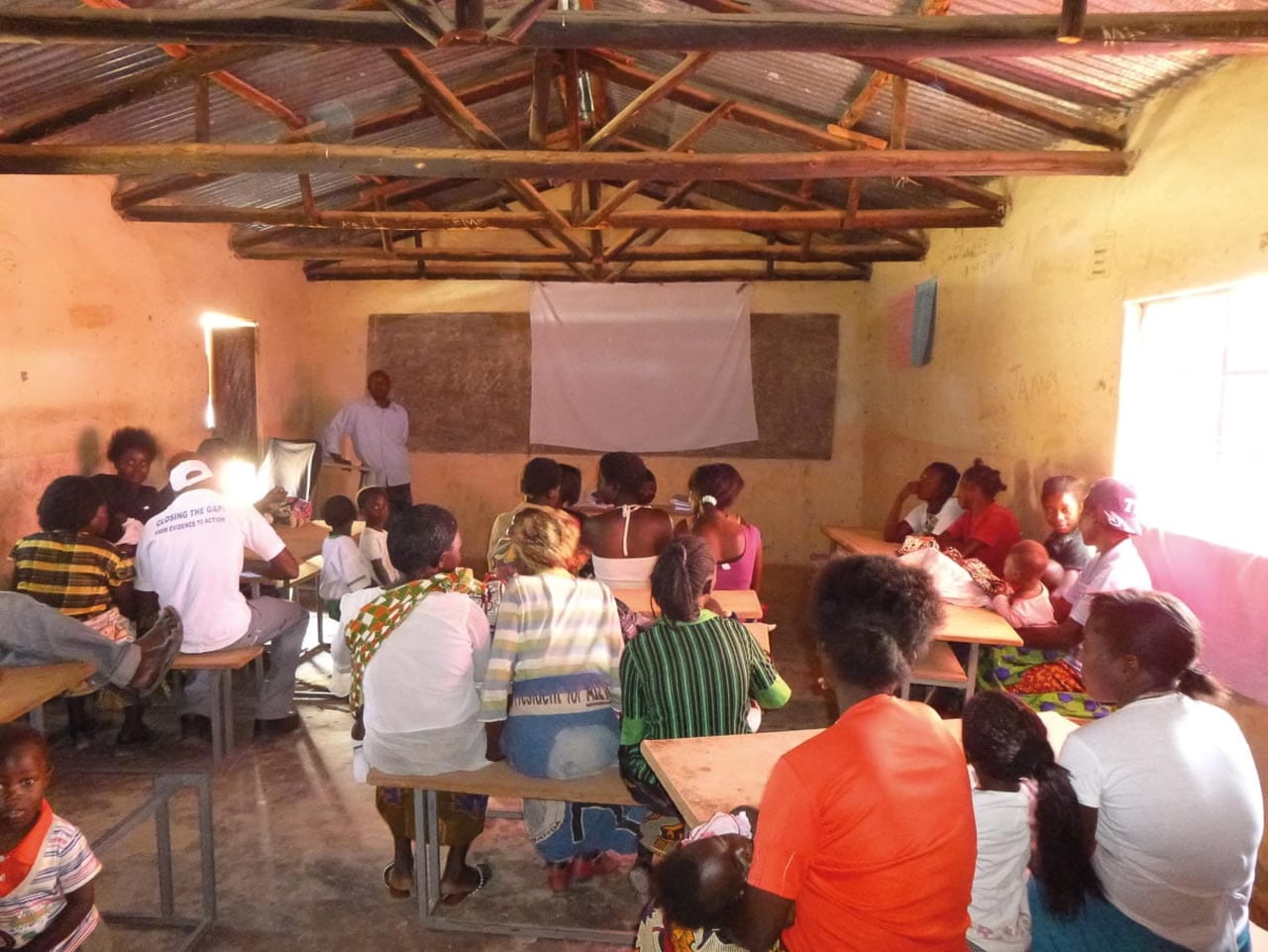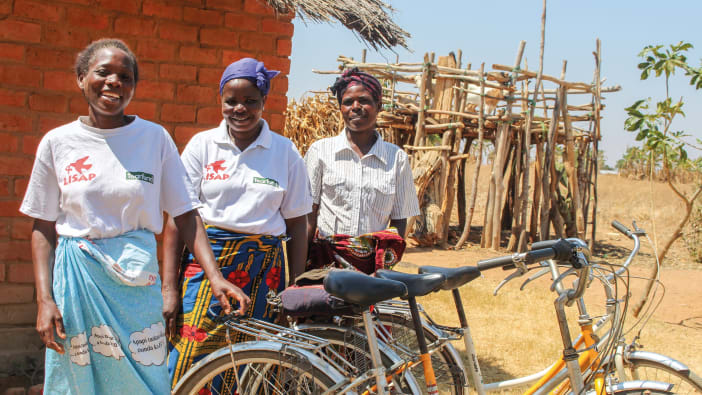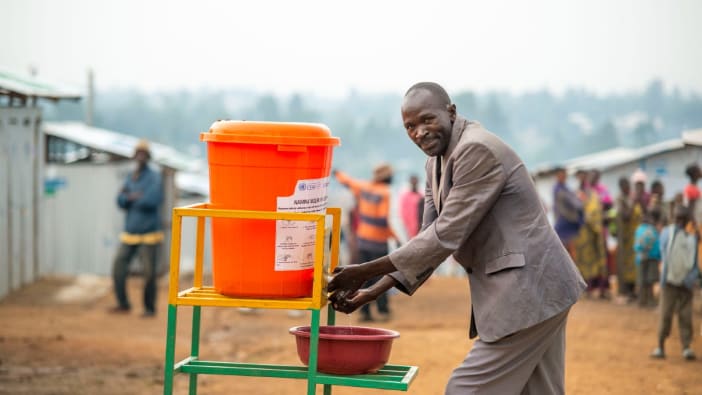Our church buildings are a great resource for spreading health messages to our congregations and community. Here are some ideas…
Show educational films
You could use your church building to show films about health care to your community. Medical Aid Films produces films on topics such as nutrition, maternal health and children’s health. See Resources page for more details.
Here are some tips for showing films in your church building:
- Think about sound. Will people be able to hear the film? People will usually cope if they cannot see the film well, but it is essential that they can hear it. Could you borrow some speakers or a PA system for the event? You may also want a microphone for the person introducing the film.
- Find a screen to project the film onto. If you do not have a projector screen, you can use a light-coloured wall, a plain white bed sheet or even sheets of paper.
- Check your power source. Make sure you have a reliable source of electricity, if possible. You will need it to power equipment such as laptops, DVD players, projectors, speakers etc. You could consider borrowing a generator from someone if needed.
- Test the equipment several days before the screening to make sure it works. If there is a problem, you can try to fix it or find replacement equipment. If possible, bring spare equipment on the day in case something goes wrong.
- Block out the light. If you are showing a film during the daytime, cover the windows to block out the light. This will make it easier for people to see the film.
Display health promotion messages
Do you have noticeboards inside or outside your church? You could use these to display posters about health issues (eg the one in the centre of this magazine).
You could also paint health messages and pictures on the walls of your church. One church in Uganda helped children put paint hand-prints along the wall from the latrine to the tippy tap. This reminded them to wash their hands after using the latrine. (Please note: make sure the paint is non-toxic.)
Run groups and courses
Could you use your church building to run support groups dealing with health issues – both physical and mental? Are there local health workers or counsellors who could help you run the group?
Here are some ideas for types of support groups:
- a group for mothers before, during and after their pregnancy
- a group for people living with HIV
- a group for people struggling with addictions
- a group for people dealing with depression
- a group for people who have been bereaved
- an exercise group to help people stay healthy (see page 12).
Could you invite an organisation to run a first aid training course in your church building? The Red Cross and Red Crescent Societies offer training courses in many countries around the world, as does St John Ambulance. Your church could then provide this valuable service to your community. You could arrange for the trained first aiders to attend community gatherings, sporting events etc.
Host a clinic
Is there a local NGO that needs a place to run a health clinic? Perhaps you could offer them your church building. You could get involved in advertising the clinic and identifying people who might benefit.
The tips on showing educational films are adapted from Community screenings for participatory video – a guide. To read this guide in full, visit www.insightshare.org and click on ‘Resources’ and ‘Screening guide’.
Knotty problem
Question: ‘Many churches and NGOs have feeding programmes where they simply give out food. How can we empower communities to look after the health and nutritional needs of their own children? Can you give me any examples?’ (Bing Roncesvalles, Philippines)
Answer: Poor health, malnutrition and poverty are closely linked. Food may be given out for many reasons. For example, there may be a food shortage in a district, or people may be too poor to buy enough food or the right kinds of food. So the first task is to understand the problem and its causes. Then you can find appropriate and sustainable solutions.
Food shortages in a farming area might be due to crop destruction. In this case, you might discuss with the community how to help farmers become more resilient to extreme weather conditions and how to improve crop yields. If urban poverty is the problem, you may need to focus on income generation and starting small businesses. If the problem affects only one group, such as poor growth in children under two years of age, then it will be important to identify reasons for the poor growth. These might include frequent illness due to an unhealthy environment, or poor breastfeeding and weaning practices. In this case, you may need to focus on activities such as handwashing, or training families in infant feeding.
The type of ‘empowerment’ may also vary. For example, if a local farmer tries new methods and gets better results, his experience can be shared with others. Or if some families manage to raise well grown children despite their poverty, then learning about what they do might reveal practices that other poor families can use. However, when there is a disaster or famine, it is necessary to give out food, as well as teaching people how to prepare for (and avoid) future disasters. But a feeding programme should only be a temporary ‘sticking plaster’ as it does not solve the root problem.
Answer by Dr Ann Ashworth, Emeritus Professor of Community Nutrition at the London School of Hygiene and Tropical Medicine.
Email: [email protected]









